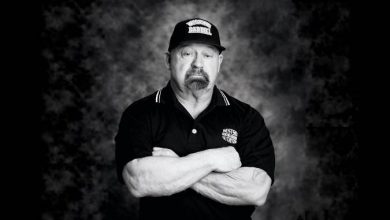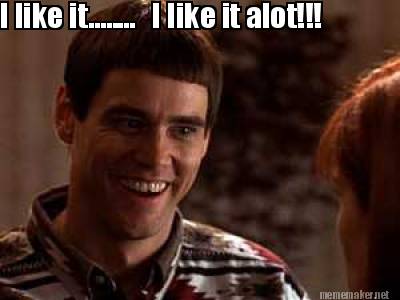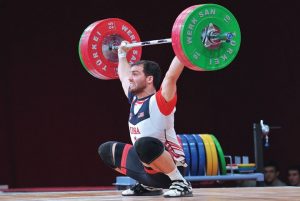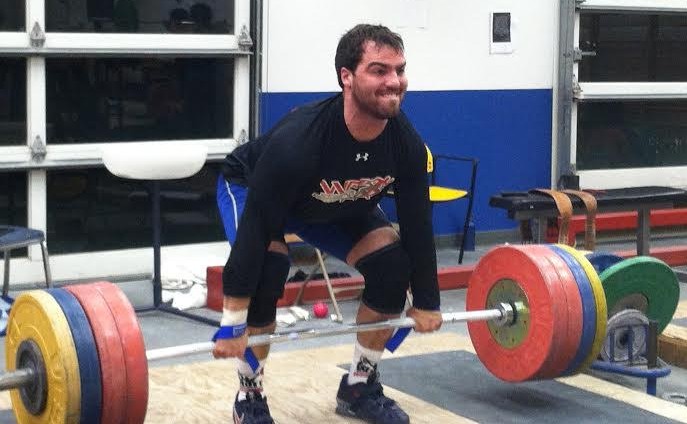
Louie Simmons, the mastermind behind Westside Barbell, recently released an Olympic weightlifting e-book – the Olympic Weightlifting Strength Manual. Louie Simmons has always been controversial within the Olympic weightlifting community, and this particular book was no exception (see here, here, and here if you are interested). Today I’m going to try and answer the question: what does Louie Simmons know about Olympic weightlifting?
Before I get started, I want to declare a few things. First, I do not know Louie Simmons. I have never met him and I have never had any personal communication with the man.
Second, I want to recognize that he is one of the most (some argue THE most) accomplished powerlifting coach in history. He has done more for strength sports than anyone else in the game. I would be hard-pressed to find a single competitive lifter who hasn’t at least heard of Louie Simmons.
While there is no denying Louie’s successful powerlifting career, today’s topic is about what he knows about Olympic weightlifting, not powerlifting.
This article is intended to be an honest review of nothing but the content of Louie’s e-book.
Right out of the gate, it’s obvious why his book is upsetting most US Olympic weightlifting coaches: it’s full of very emotionally-charged claims.
On the first page of the intro, Louie writes that the US Olympic weightlifting coaches are unsuccessful because they “don’t know how to make a person super strong.” He continues on the next page by telling some people who “dream” of stepping on an international platform- “I am afraid this will never happen due to the present coaching we have.”
That’s enough to have most US weightlifting coaches fuming.
However, I’m not here to review emotions. I can give Louie the benefit of the doubt and assume that his heart is in the right place and that he truly wants to see American Weightlifting be great. Maybe this is just his way of showing some tough love.
I am neither a guru of the Westside method, nor am I a powerlifter. I am a weightlifter and a student of strength training who’s spent my entire life learning from some of the best international Olympic coaches. Given my background, my goal is to objectively review what Louie knows about weightlifting.
To directly quote the e-book:
“[Analytical thinking] requires you to compare sets of data from different sources; identify cause and effect patterns; and draw appropriate conclusions to arrive at appropriate solutions.”
And that’s exactly what I plan to do today. However, rather than break down the book from every angle, I’d like to share with you the highlights of what I liked, what I mostly agreed with, and what I flat-out disagreed with.
What Louie got right
The first section of the book talks about recruiting young people to develop a strong talent pool of athletes. Almost any rational coach would agree with this. However, the book makes two very unique recommendations:
First, focus on recruiting kids who are extraverts and aren’t into team sports. It’s a simple thought, but very astute. There are a lot of youth athletes who don’t enjoy being on a team.
In 2010, I had the honor of attending a presentation by Frank Mantek, the German national coach, and he talked about similar topics with athlete selection. In fact, he had a lot of the lifters take a personality test to “find the ones who wanted to be on stage***.”
Being a weightlifter takes a unique personality.
The second recommendation is to make youth weightlifting more fun. This is another simplistic, yet applicable point.
Weightlifting is a very physically demanding sport, but it should also be fun! Being strong and moving weights quickly is exciting, and I think that is a quality we need to communicate to our youth to help with recruiting.
If you haven’t worked with kids before, keeping them entertained for more than 40 min is nearly impossible. Focusing on movement and incorporating a lot of different athletic motions is a good way to hold a kid’s attention. Playing some walk out music to pump people up at competitions can’t hurt, either.
But perhaps the thing I like most about Louie’s recruiting ideas is the systematic approach he has to athlete selection: recruiting kids between 9-13 and progressively narrowing their athletic focus until they are 21+ (senior lifters) when they should be ready for a “high-performance phase” is a solid plan.
Almost everyone agrees that recruiting youth is vital to the sport’s future, but seeing an actual roadmap is very intriguing.
Where Louie and I [mostly] agree
After reviewing the entire book, the most prevalent overarching theme (to me, at least) is Louie’s methods on how to identify and attack weaknesses. While this is not a revolutionary concept, I like his methodical approach to accomplishing this goal.
Particularly, I like his conceptual approach to managing volume and intensity. It may sound overly simplistic, but sometimes discerning what actually works and what contributes to your success can be a difficult task.
His 4-day program set up is relatively basic: 2 days focused on maximum effort and 2 days focused on speed, or the “dynamic effort.” The training load for each day is guided by “Prilepin’s Chart,” a volume/intensity charted created by a Soviet weightlifting coach during the 1970’s.
The periodization plan consists of 3-week “pendulum” waves that progress linearly in intensity, while simultaneously increasing then decreasing in the total volume of the workout. After the 3 weeks, the intensity “waves” back down and the cycle repeats itself. However, exercise selection is highly varied. The theory is that you can avoid plateaus by constantly rotating exercises.
While I don’t completely agree with every detail of this plan, conceptually I actually like this framework. At the end of the day, it’s just about applying basic scientific principles to training.

When you run any experiment, you have independent and dependent variables. You keep as many things as possible constant, change one variable, and observe the results. Since volume, intensity, and weekly methods were all controlled, the primary experimental variable for this system was exercise selection.
At a minimum, this allows a coach to clearly see what exercises contribute most to each athlete’s lifts. Often times I see weightlifters (more so at the beginner/intermediate level) hop around from program to program to try and see what works best for them. The unfortunate side effect of this approach is that they actually don’t fully understand what it was that they’re testing.
Is variation crucial to success? Yes, but only if you understand what the heck you’re trying to accomplish in the first place. If you simultaneously change frequency, volume, methods and exercises, how do you know what actually contributes to success? You can get lucky and have great gains for a cycle, but if you don’t understand why then your success will be difficult to duplicate.
Controlling variables is a good approach to understanding exactly what works for you.
Where Louie misses the mark
Although I liked the theoretical methods behind the Louie’s training approach, I did not agree with the specifics. Particularly, I didn’t agree with the use of special strength exercises as the primary driver for training.
Weightlifting, at its core, is a sport. Part of being proficient at a sport is practicing the movements of your sport. The e-book argues that a lifter can “increase muscular strength to perfect skills by increasing coordination.”
Basically, the whole premise of the copious exercise selection is that increasing strength will increase coordination. This is true to an extent, but strength alone is not enough to increase coordination at high levels.
The e-book argues that just constant raw strength gains will automatically lead to gains in the snatch and the clean and jerk, and this is simply not true. Yes, it will help, but eventually you need to full snatch and clean to be able to master the movement.

In fact, managing the training of weightlifters by N.P. Laputin and V.G. Oleshko, shows a very detailed chart of the average correlation between various squats, presses, and pulls to the classical lifts. This is the same exact chart used by American weightlifting coaches to determine the minimum amount of strength needed to lift a certain weight (110% of clean for front squat, 130% of clean for back squat as an example).
So in reality, the idea that you only need a certain percentage of strength is not an “American” thing; it comes from the very same texts that the Westside uses as the basis of their methods.
The reason for this percentage is that weightlifting at a high level becomes just as much about developing correct motor patterns as it does developing pure muscular power.
Let’s quickly examine this study by Ramati and Mallakzade (2011) where the snatch trajectories of beginner and professional weightlifters are broken down:
The research showed that optimal snatch bar path is more dependent on power requirements (read: weight on the bar) than just physiological dimensions. More directly stated, “The less skilled weightlifter needs much more muscle energy in comparison to the technically advanced athlete.”
“Weightlifting at a high level becomes just as much about developing correct motor patterns as it does developing pure muscular power.”
tweet thisWeightlifting is a combination of strength and coordination, and both are required to reach technical mastery. Yes, strength is vastly important, and every world champion at least meets the minimums, but proper motor learning is just as important.
Unlike the deadlift, which is a much more technically simple lift (notice I said SIMPLE not EASIER), you cannot improve the Olympic lifts without actually doing them.
What you should take away
The main takeaway here is that there’s something to be learned from everyone. While Louis Simmons may not be a weightlifting coach, he has molded some of the strongest people to ever walk the earth.
It is important to incorporate the messages you think are valuable and keep moving forward. Just because you don’t agree with every concept does not mean the entire text has zero value.
Some of the points I’ll personally take away from Louie’s book are:
- Focus on recruiting kids from individual sports. Not everyone likes to be on a team and I think coaches should focus on recruiting more from youth individual sports (track/wrestling/swimming, etc.) than trying to pull kids away from the major team sports. Personality plays a huge role in weightlifting.
- Try to limit the amount of variables you change in training. Experimenting and finding what works is great, but don’t change too much at once or it will be hard to identify what the primary game-changing factor is.
- Incorporate some of the interesting assistance exercises Louie includes for developing posterior chain strength. While I would NOT make them the primary driver in my training, I think they could play a role as some assistance work for when I’m far out from competition.
Keep learning and keep moving forward!
*** Interesting side story – The German coaches said that Matthias Steiner could not have done 258 kg to win the Olympics without the crowd and the excitement. They said he thrived being on stage. That story always stuck with me.

About Mike
Mike Nackoul is an 85 kg weightlifter and a member of the 2013 World team that competed in Wrocław, Poland. Mike has won national championships in the youth, junior, and university categories as well as national medals at the senior level. He has also competed on multiple junior and University teams that featured a 7th place finish at the Junior World Championships in Penang, Malaysia.
He has spent much time at the Olympic Training Center in Colorado Springs, CO, training under Zygmunt Smalcerz. Mike is a Pittsburgh native and an MIT grad, where he got his Mechanical Engineering degree. He is currently training and working out of Seattle, WA.

Great article, Mike! Thanks for sharing, Joel.
“Weightlifting at a high level becomes just as much about developing correct motor patterns as it does developing pure muscular power.”
PREACH.
Hello,
Wish there could be a strength to speed correlation (and/or visa versa)! For example if at a certain “level” (lifts to weight ratio) if a person could only vertical jump “such and such” would need an increase in “speed or strength”? And if VJ will not increase beyond a certain level then how “much more” would he need to let us say “squat”?